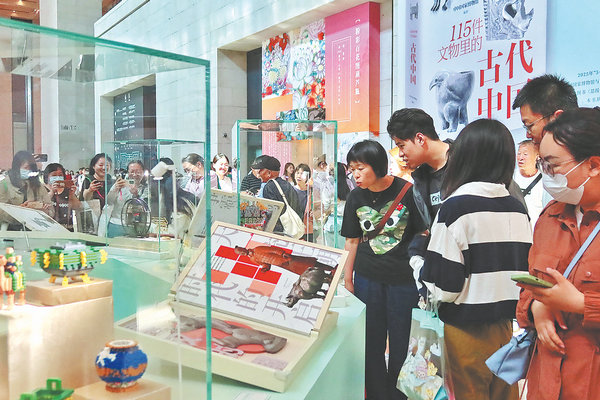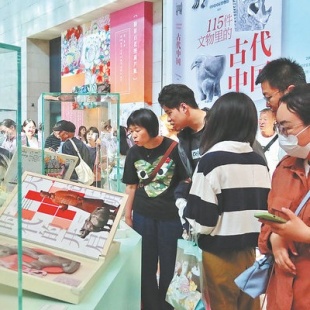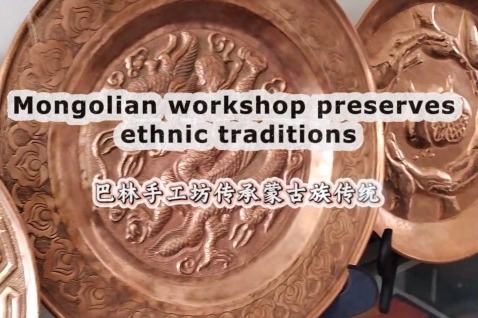National Museum's new book lets artifacts 'talk'


The long-term Ancient China exhibition is the first stop of many when visiting the National Museum of China, located on Chang'an Avenue in downtown Beijing. The exhibition covers several galleries and charts Chinese history from prehistoric times to the last monarchy, the Qing Dynasty (1644-1911). It shows selected artifacts from the museum's immense and rare collection.
The museum received nearly 7 million visitors in 2024, with the Ancient China exhibition registering over 6.8 million visits.
Recently, the museum published an informative book titled The History of Ancient China in 115 Objects, introducing 115 fine works of historical and cultural values on display at the namesake exhibition.
The artifacts featured in the book include an extravagantly adorned empress' coronet of the Ming Dynasty (1368-1644), which attracts visitors waiting in a long line for a brief look at the gallery where it is on show.
The headwear belonged to Empress Xiaoduan, wife of Emperor Shenzong, more than 400 years ago.
The majestic extravagance is vividly evidenced by the thousands of pearls and precious stones, as well as nine gold dragons and nine phoenixes, that embellish the entire bamboo structure and silk coating.
It is so popular among visitors that the museum's creativity department has developed a dozen consumer products, including a coronet-shaped magnet which sold 1 million pieces in March.
The book's texts were written by the museum's nine staff members who are experienced in writing and giving oral tours, and designing public programs and educational courses for young visitors.





































